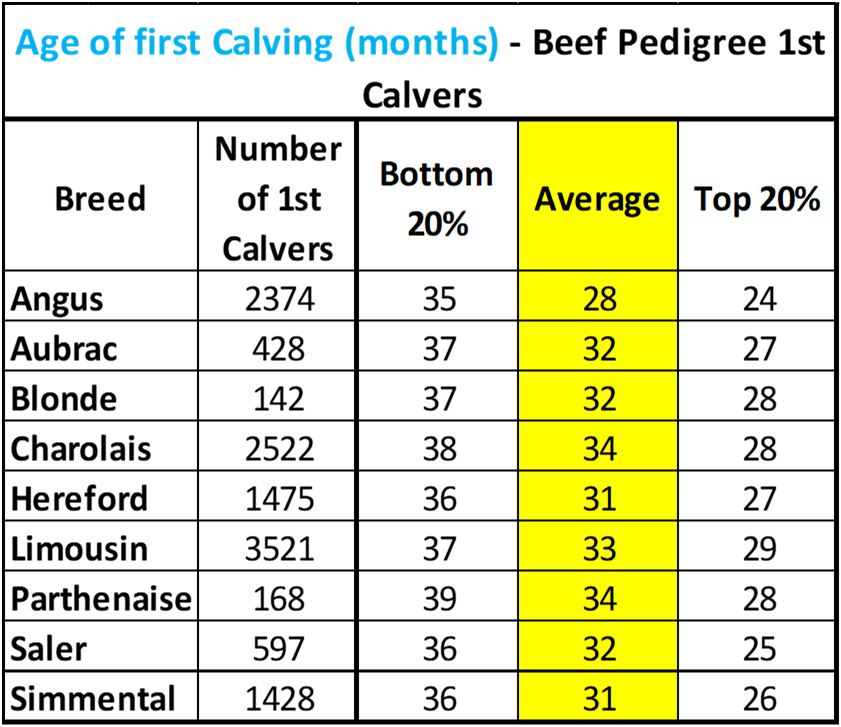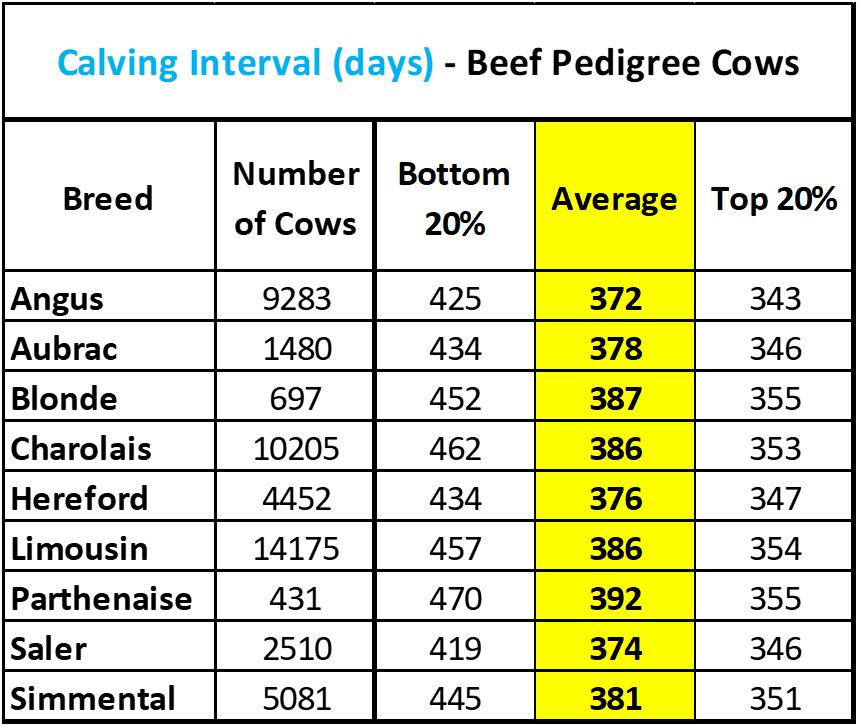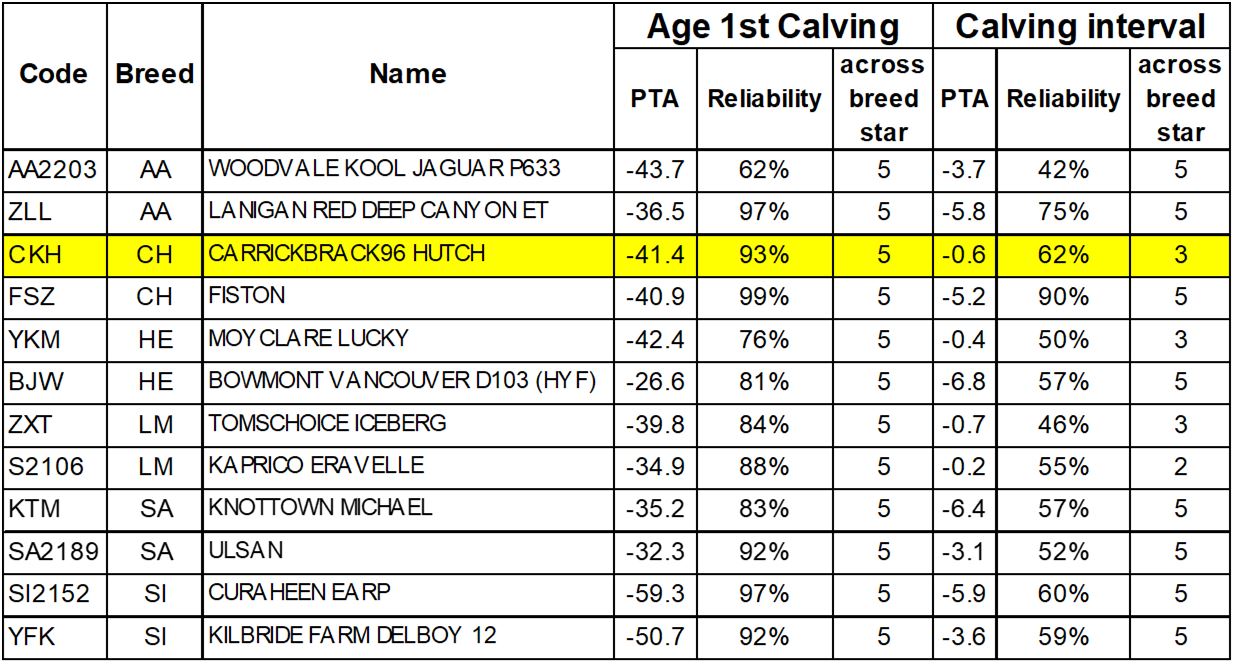A beef heifer’s natural ability to mature quickly, show heat and go in calf will undoubtedly influence how profitable she will be in an Irish Suckler herd. This natural ability (or not) to be able to calve down at 24 months of age, amongst other things, is influenced by genetics.
Of course, in the majority of cases these genes are brought into a commercial suckler herd via a pedigree Stockbull. So it is important that beef pedigree females are showing a natural ability in this area. When we look through the performance of pedigree 1st calvers across the main beef breeds, not surprisingly there is nearly more variation within a breed than between them.


Tremendous improvements have been made in these traits over the last number of years across the breeds. Our pedigree breeds have always been to the fore in making constant improvements, year on year in the terminal traits such as weight gain and carcass merit.
A trait such as ‘Age of first calving’ however poses a different challenge as it cannot be deduced from the looks of a bull how fertile his daughters will be and what their ability to calve down at 24 months will be like either. Its only through recording lots of mating, calving and ancestry data that this trait can be properly analysed and that trait leaders in terms of breeding cows and sires can be identified.
The same is true for ‘Calving Interval’. It’s another ‘invisible’ trait. The human eye cannot judge a bull for how quickly his daughters will be able to go back in calf. Again, great strides have also been made in this aspect of our national beef pedigree population. The ‘Replacement’ index, which has been at the core of the BDGP scheme, rewards animals which perform well for these fertility traits as well as having good beefing potential.
Bull Lists are now unrecognisable to how they were even 10 years ago. We are now able to identify bulls whose daughters have been found to excel at these hard to see fertility traits. Following is a random selection of some of the top performing Beef AI Bulls for these traits.

As can be seen, excellent performances for this trait can be found across the breeds. Looking at the data behind the figures – take the Charolais ‘Carrickbrack96 Hutch’ as an example.

On average, his 301 daughters calved at 29 months of age whereas their herdmates calved down around 31 months of age.
It’s really important that farmers are working with a herd of suckler cows that have natural fertility and all that goes with it in their DNA. Several studies have shown that heifers that calve at 24 months of age, live longer and are more profitable over their lifetime. The genetic trends for these fertility traits are going in the right direction however it is important not to be complacent and think that the job is done. Thankfully today in Ireland we have the tools in terms of the genetics and the indexes to make continual improvements in this area.
